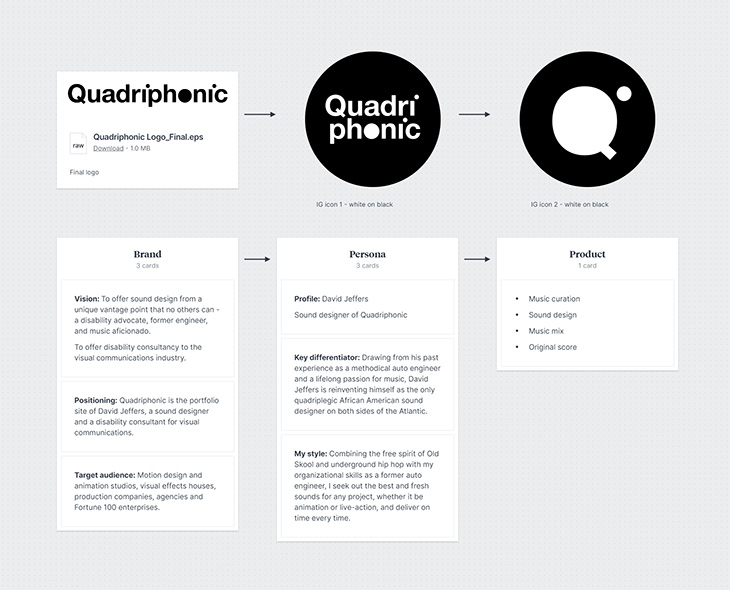In 2011, mechanical engineer David Jeffers suffered an accident that left him a quadriplegic. During his long recovery, Jeffer’s relationship to music and sound was profoundly altered as the loss of his ability to move heightened the way he processed and recognized sounds.
“Early on in my recovery, I found myself stuck in bed, and with no function from the chest down, I literally couldn’t do anything but look at the wall/ceiling and listen,” Jeffers writes on his website. “During this time, I began paying close attention to different sounds because it was the only way to know what was going on in the house or hospital.
“From being in the hospital knowing that it was time to get up because you hear the rattling of the food cart to at home knowing which kid is awake and what he is doing, all based on what I heard, really made me understand what things sound like and their many nuances.”
Jeffers had always been interested in sound and the technology of delivering sound, going so far as to build speakers out of old parts when he was a kid growing up in North Carolina. In the early ‘90s, he started a music production company, and in the 2000s, he co-founded an online record label.
He considered studying acoustics as a mechanical engineering major at North Carolina Agricultural & Technical State University but decided instead to pursue a more traditional path, going to work for automotive companies, including Ford and BMW, in Detroit.
But after his accident, he returned to his first love – sound. He also returned to his home state of North Carolina.
A few years ago, Jeffers launched his own sound design firm, Quadriphonic, a play on his own status as a quadriplegic but also a lift from high-end sound design of the ‘90s, which at the time was quadraphonic stereo, also known as 4.0 surround sound. Jeffers is also a fan of Detroit artist and producer, the late J Dilla, who also spent some of his life in a wheelchair due to having lupus and a rare blood disease. That fandom influences Jeffers’ approach to sound design.
Los Angeles-based inclusion motion design studio Bien, who previously worked with Jeffers on an award-winning campaign for the Paralympics, helped Jeffers craft an overall brand strategy and look for his sound-design studio.
Bien felt that it first needed to understand the story behind Quadriphonic so the team immersed themselves in Jeffers’ world, learning his influences and ambitions. Eventually they settled upon the brand message that “David is Quadriphonic and Quadriphonic is David.”
After aligning the brand goals with the business goals, Bien devised a strategy for Jeffers, making sure it would be lean and light enough for him to manage on his own and custom-fitting it to his unique needs.

The brand’s motion-design look is built around a straightforward Helvetica sans serif font, with subtle twists included, such as off-setting the dots on the “i’s” in Quadriphonic to signify the frequently syncopated rhythms with which Jeffers plays.
“I like to use [J. Dilla’s] theories in my sound design where I sync my sounds based on the feeling of what’s on the screen and what the story’s about, rather than just trying to hit a mark dead on,” Jeffers says in the film.
Bien created a short teaser film, a :25 trailer and the above longer brand film. The film showcases Jeffers’ approach to sound design, with a smooth beat running behind the narration that trails off, leaving only the scratchy sound of the end of a vinyl record.
Besides his work as a sound designer, Jeffers also serves as a peer mentor for others with spinal cord injuries and as a disabilities advocate and consultant.
Tags: bien branding inclusion motion design quadriphonics sound design













































__twocolumncontent.jpg)











